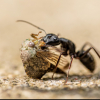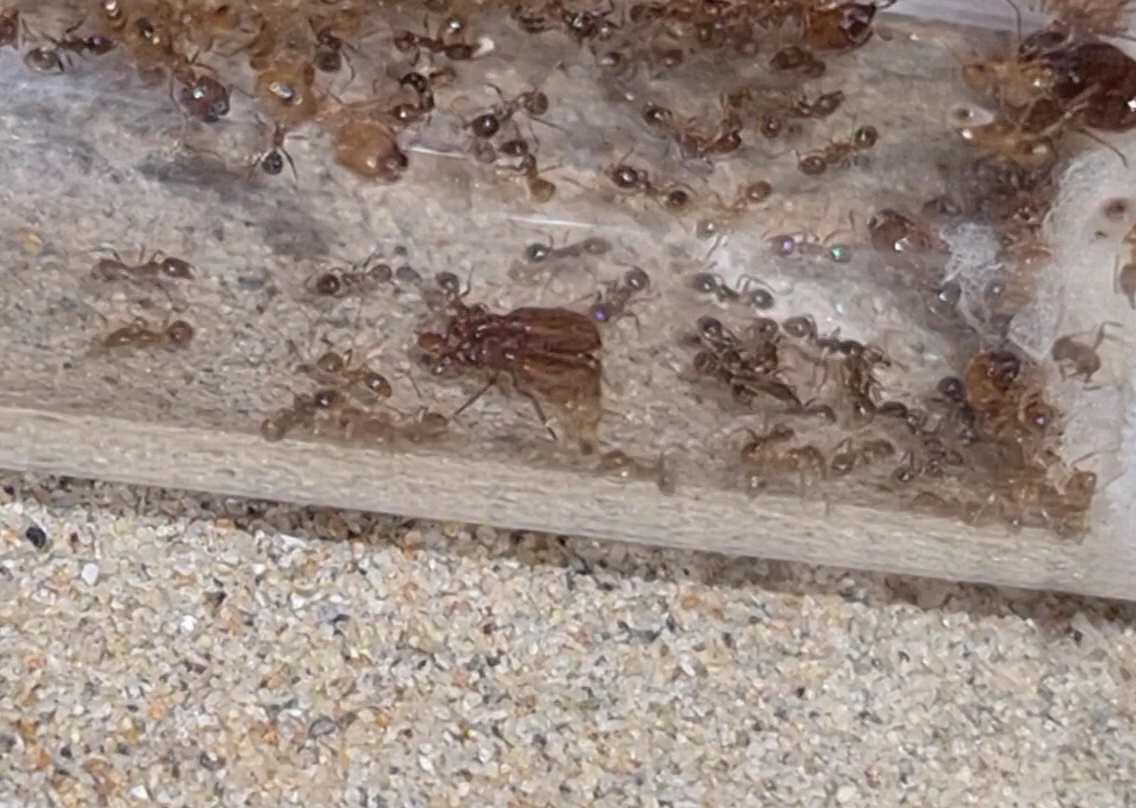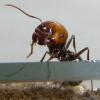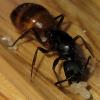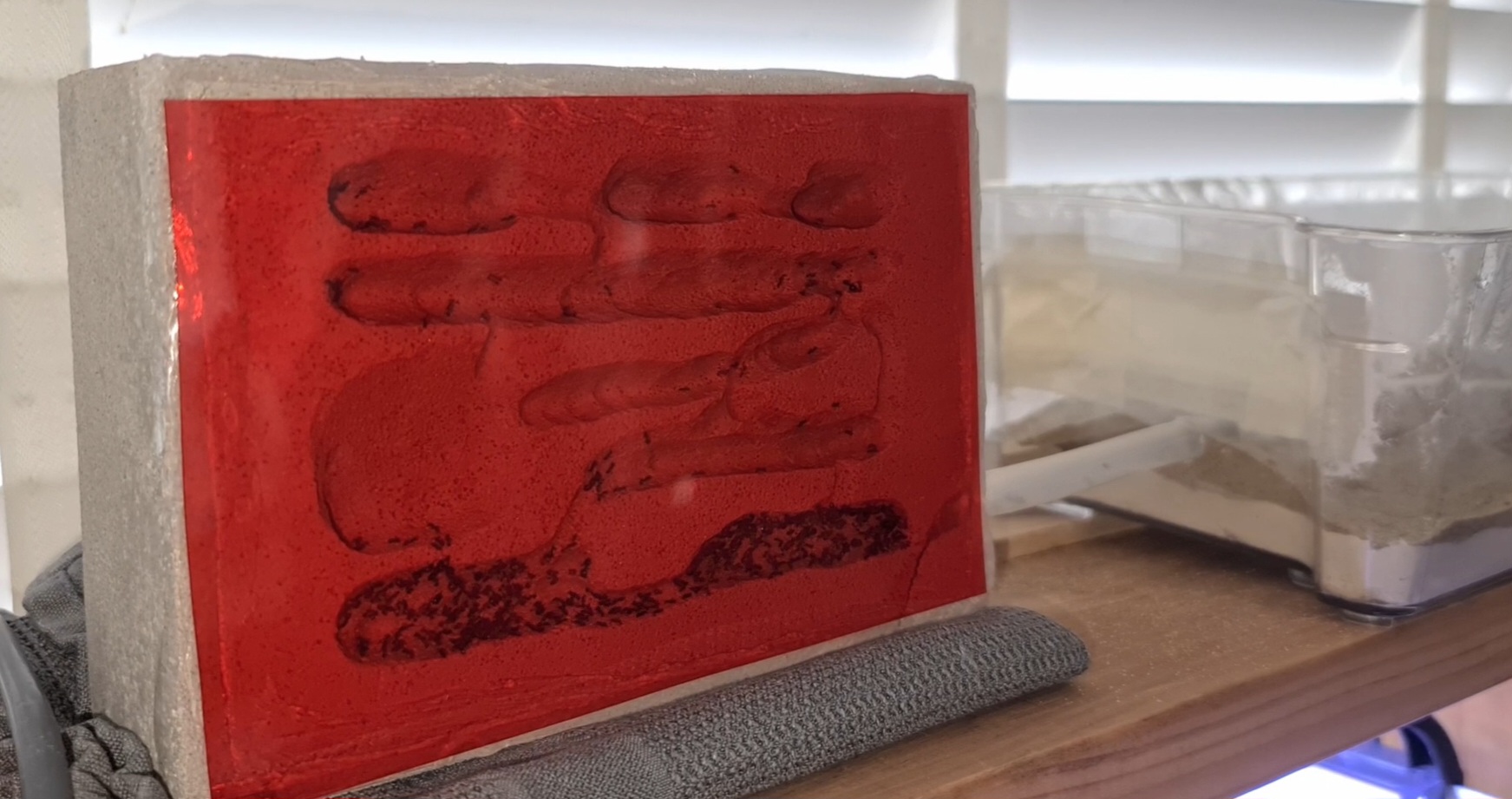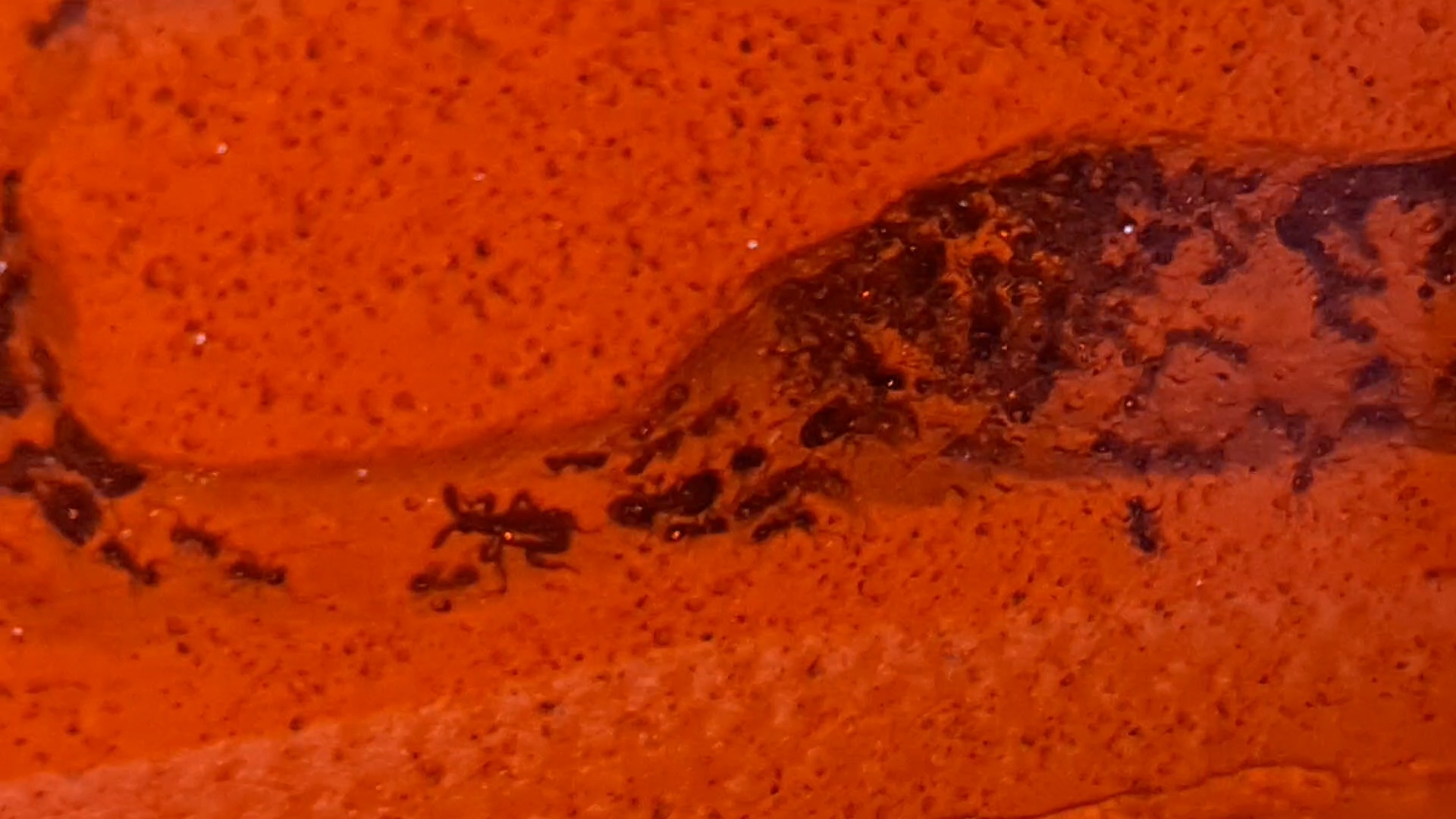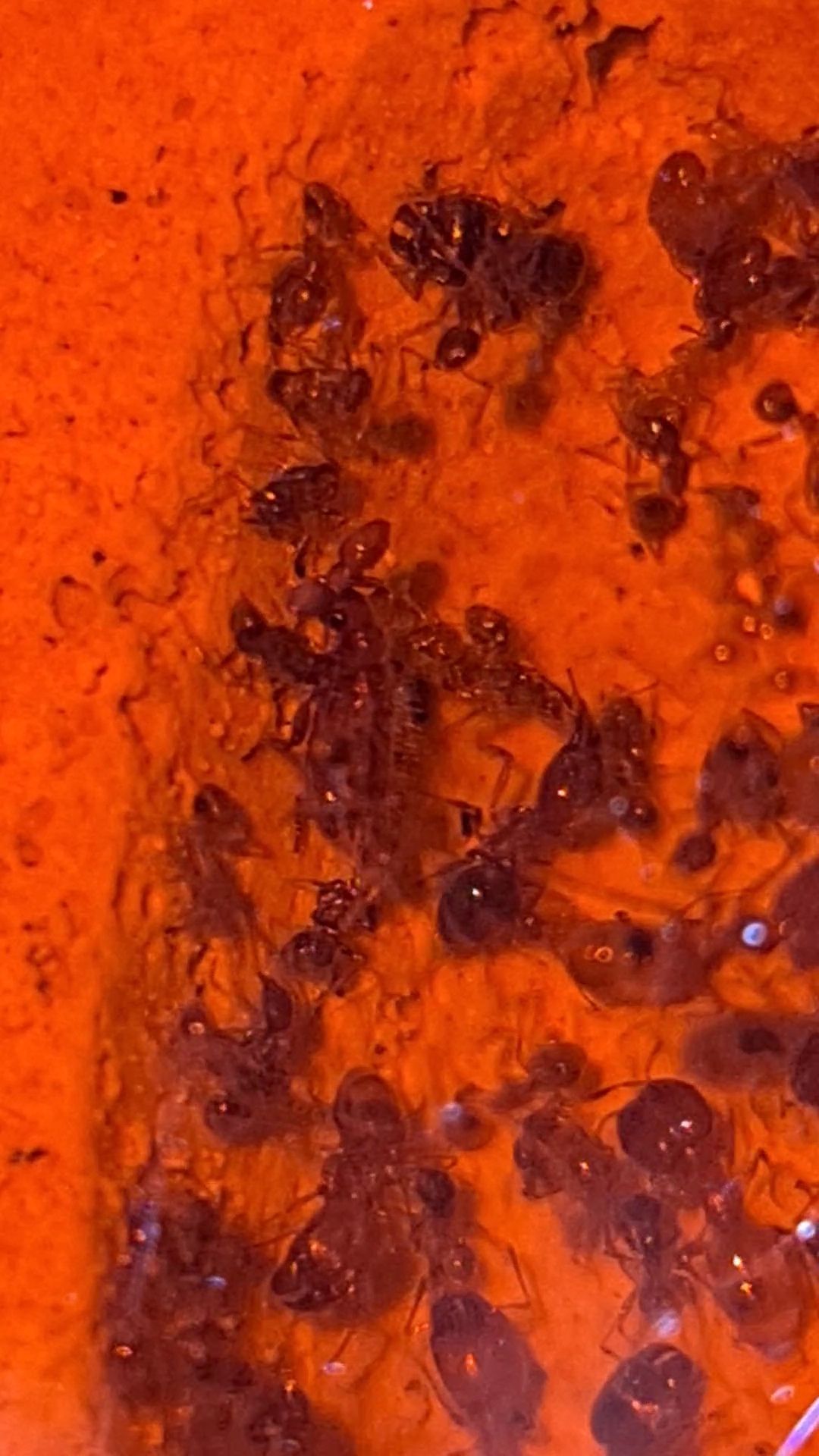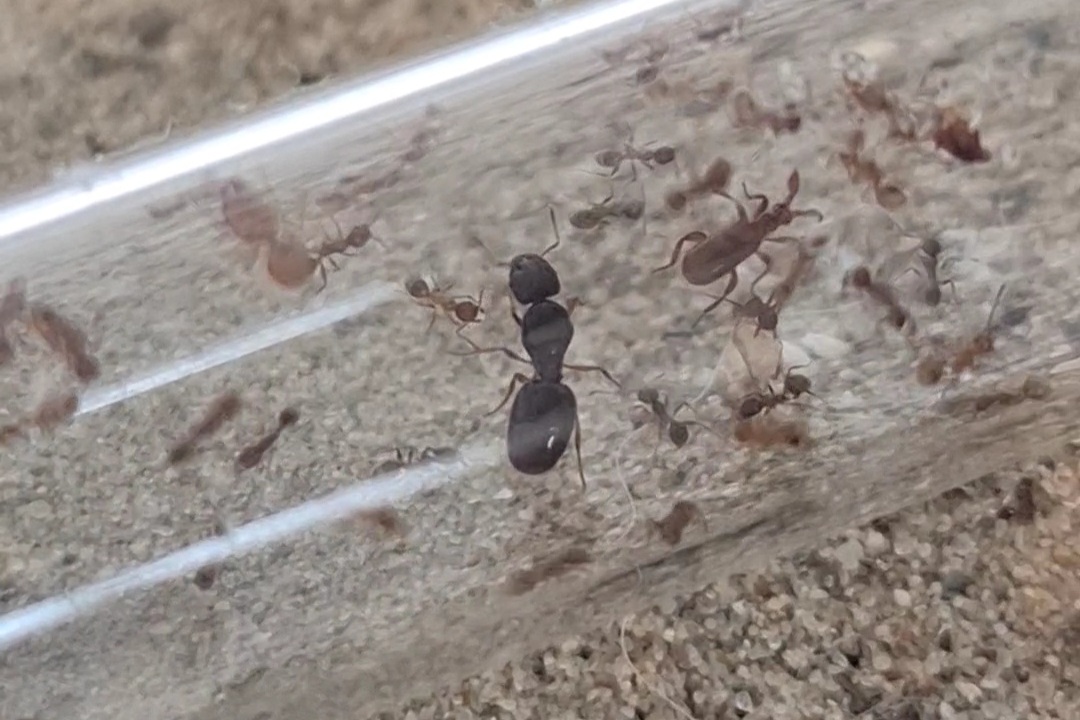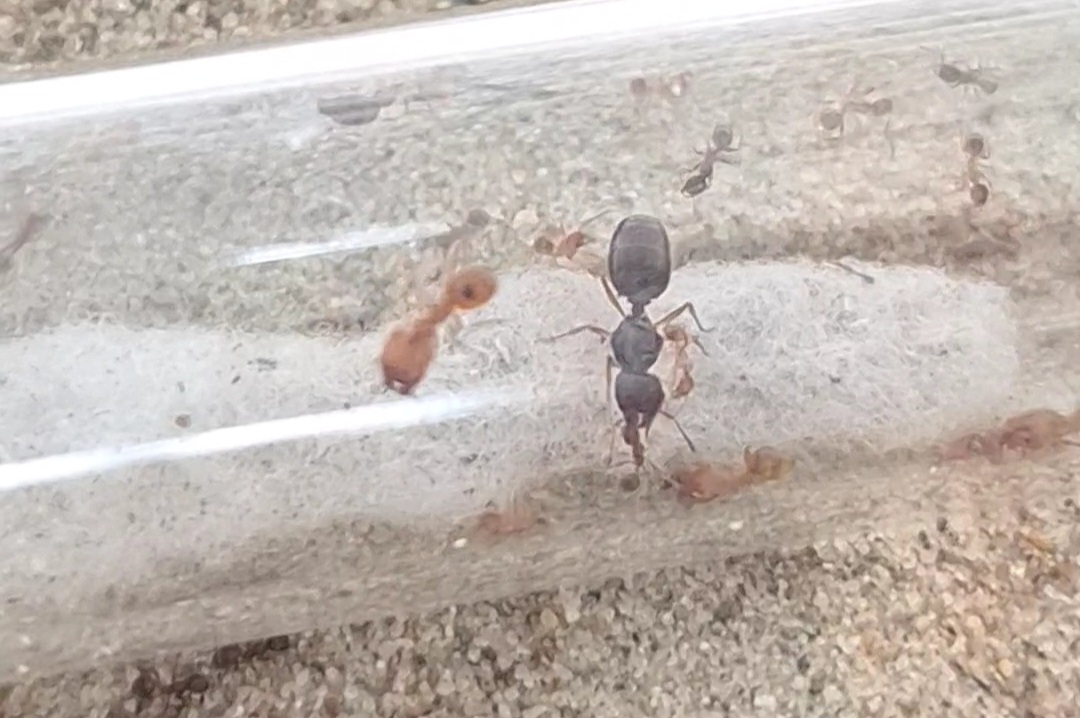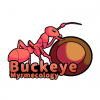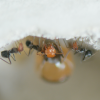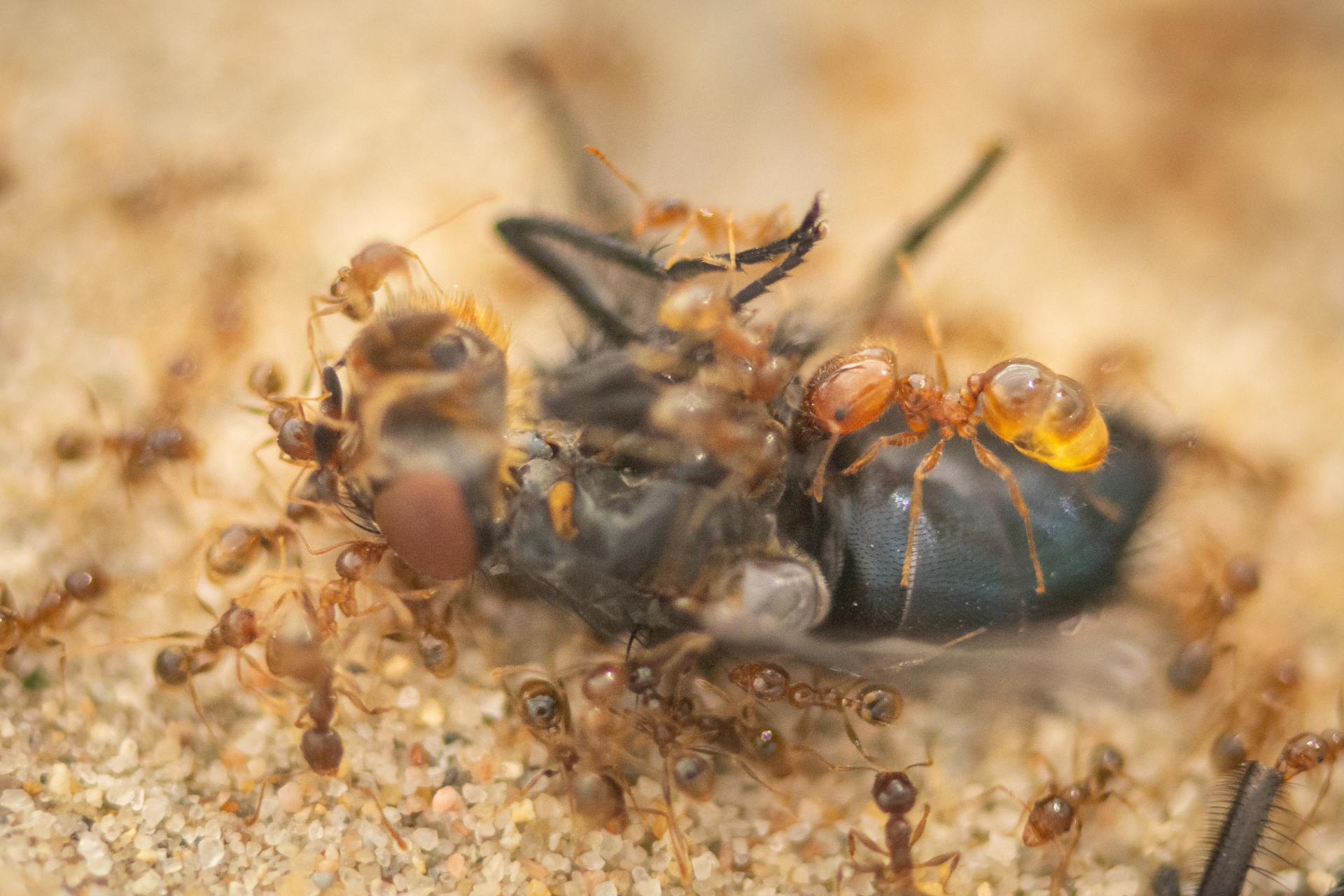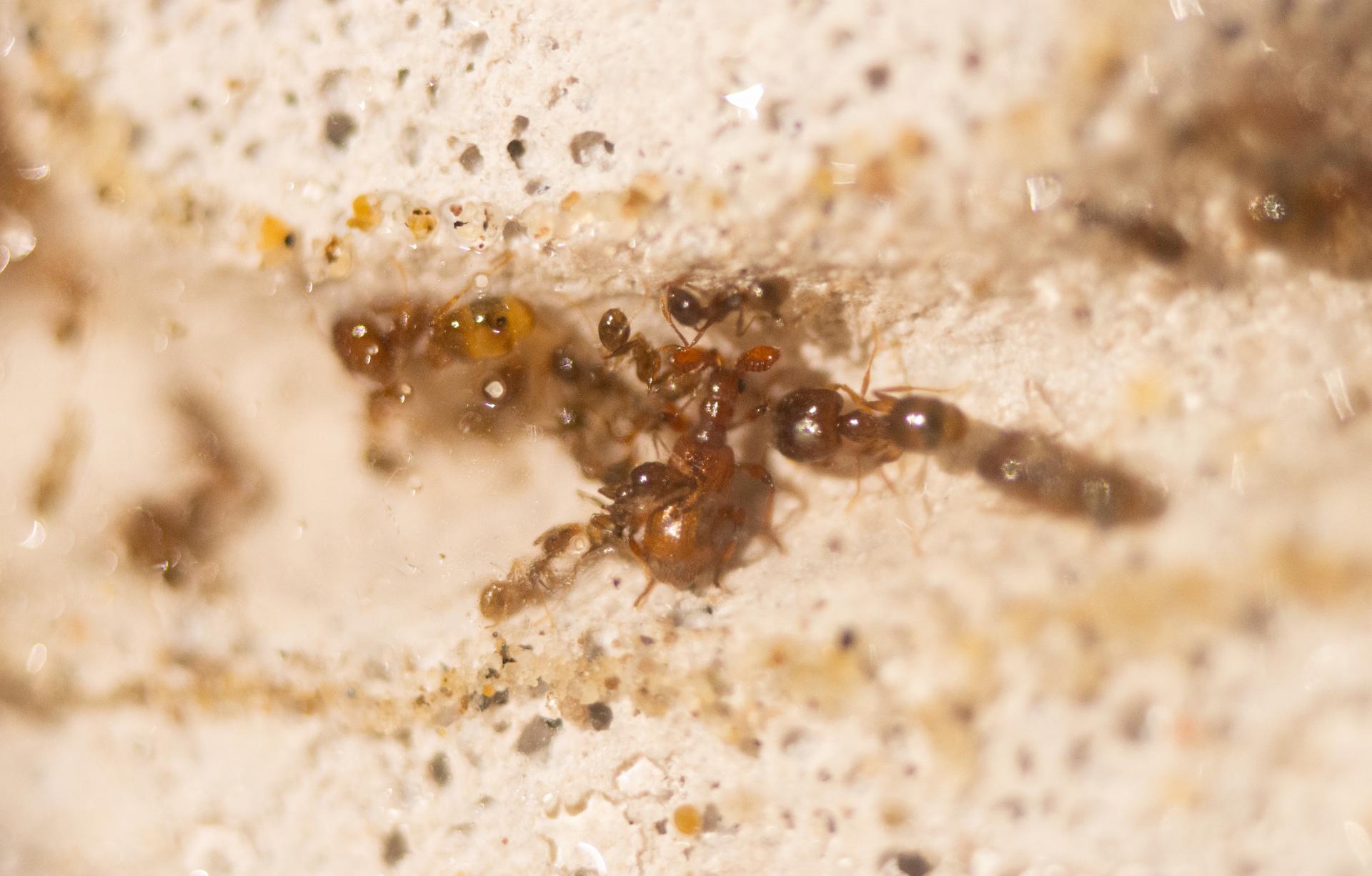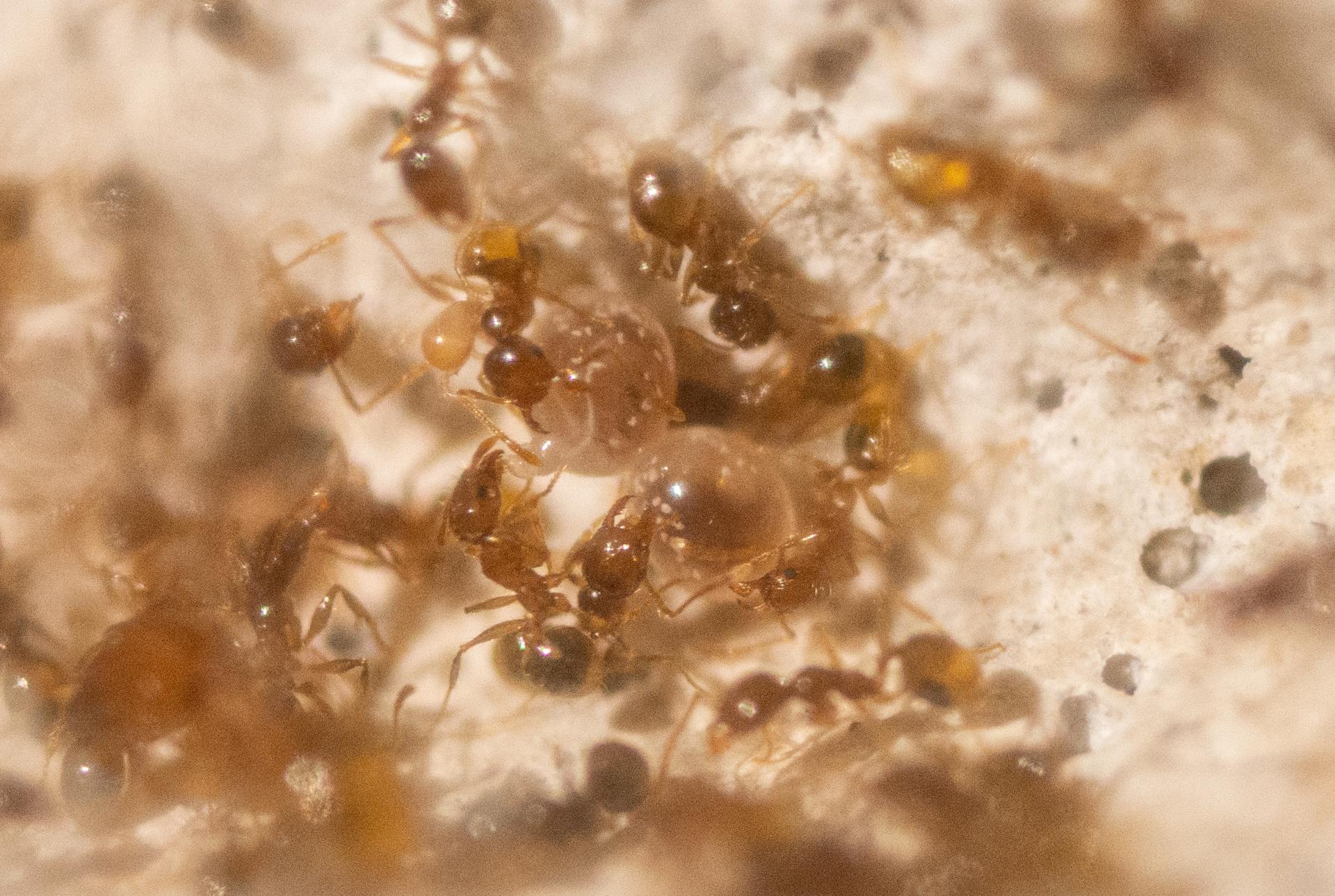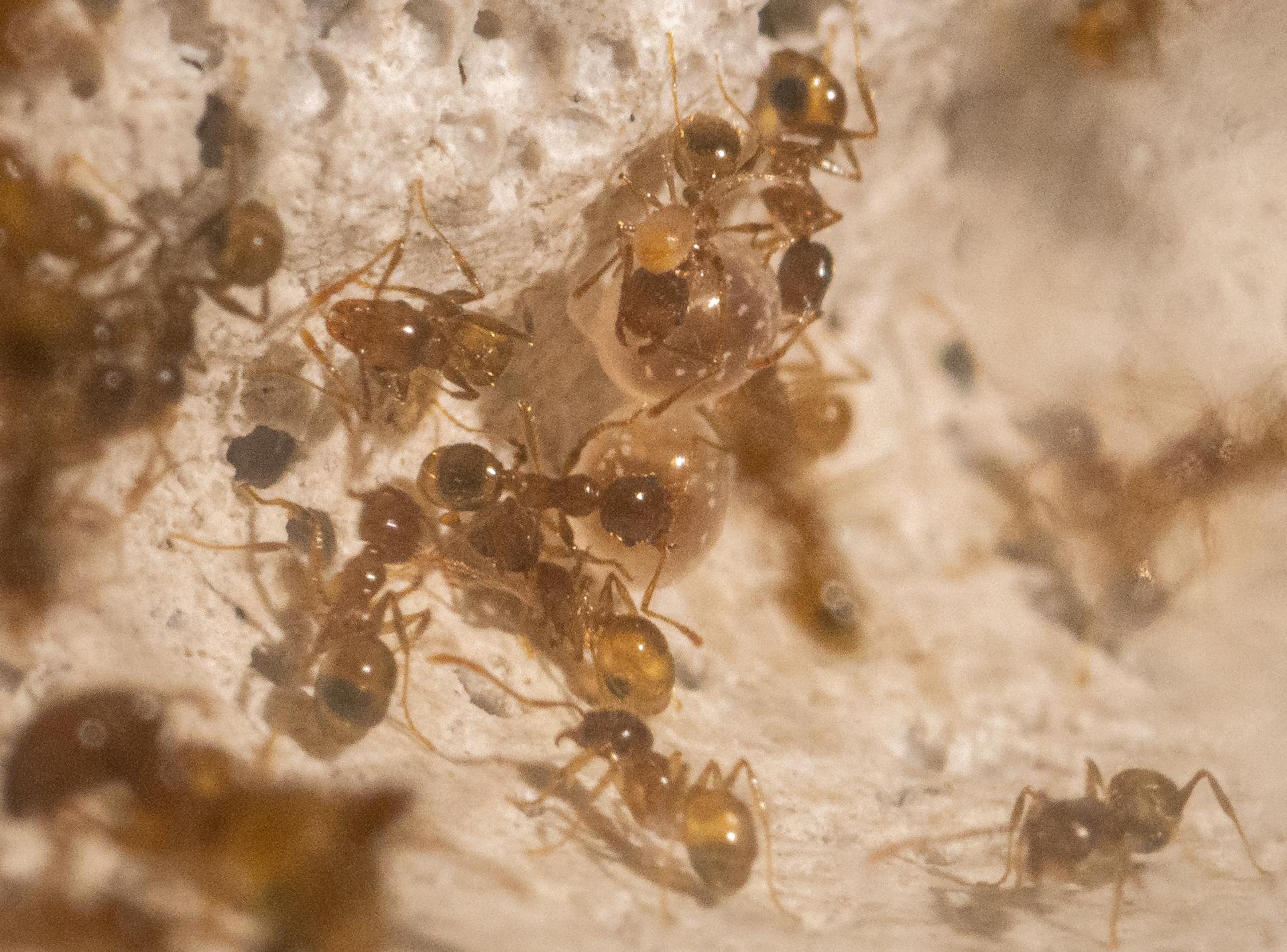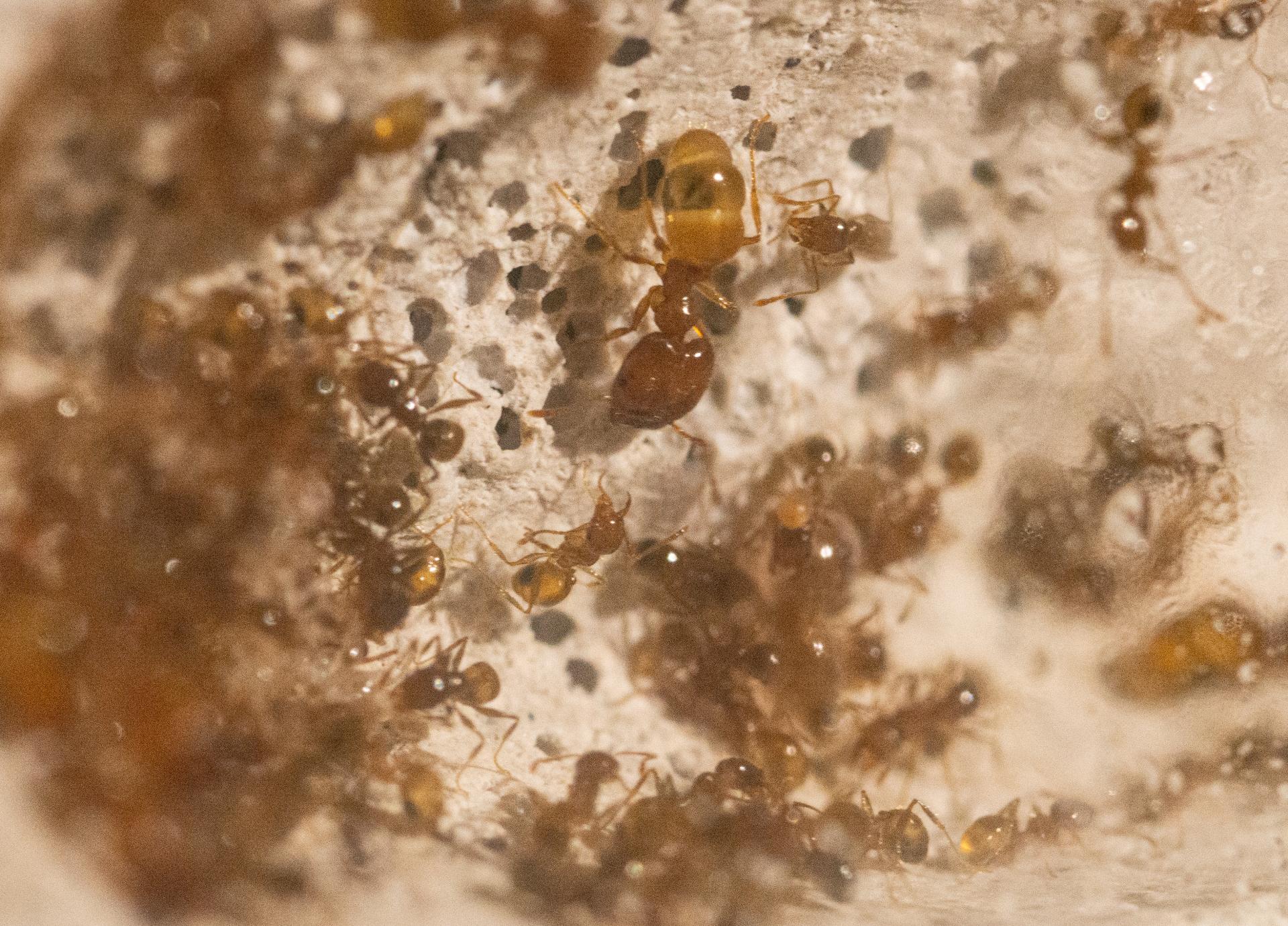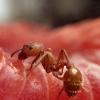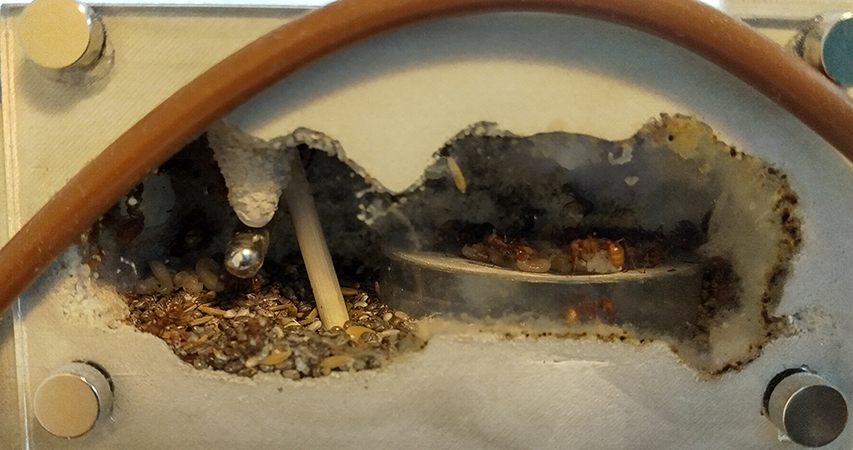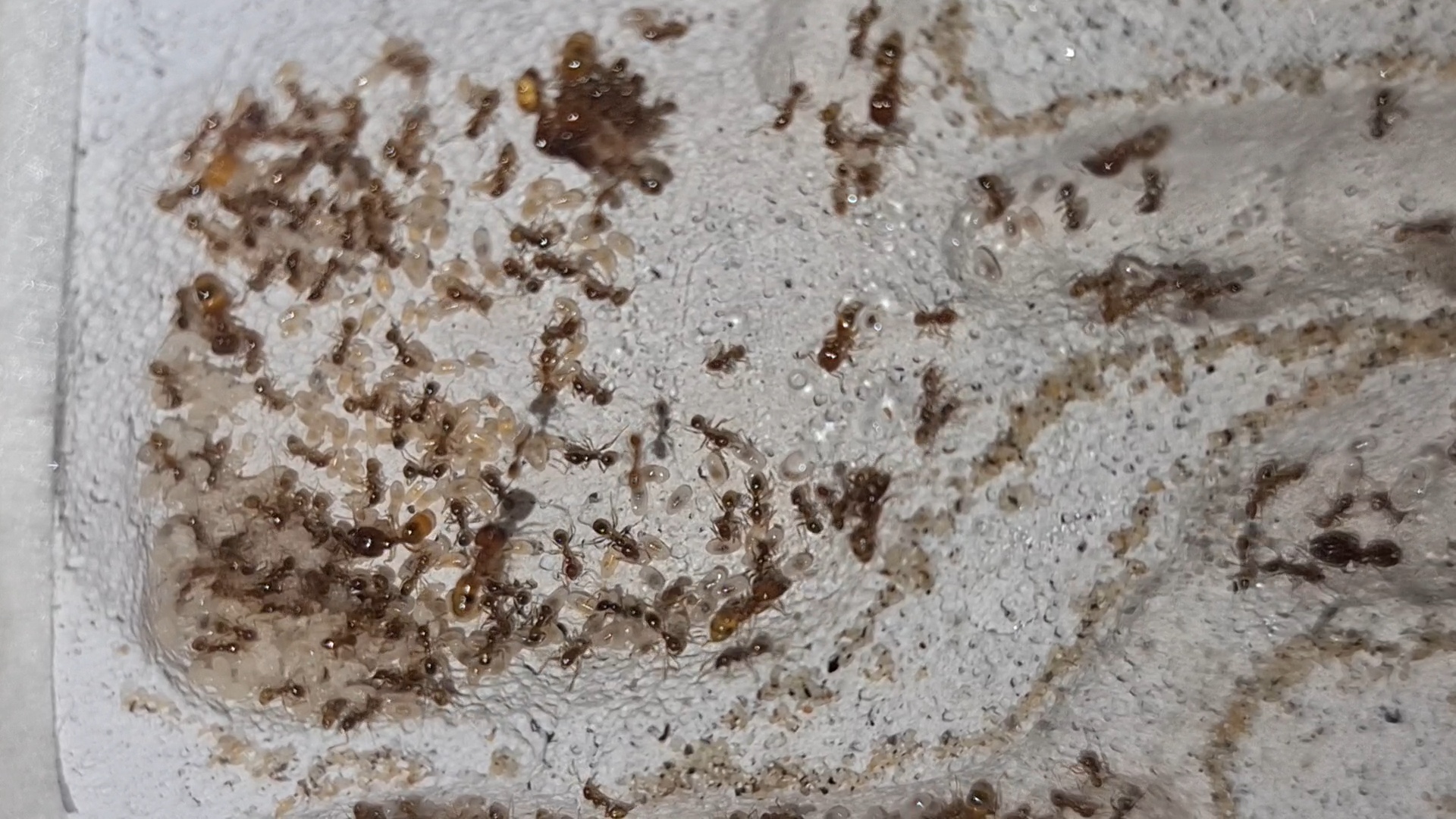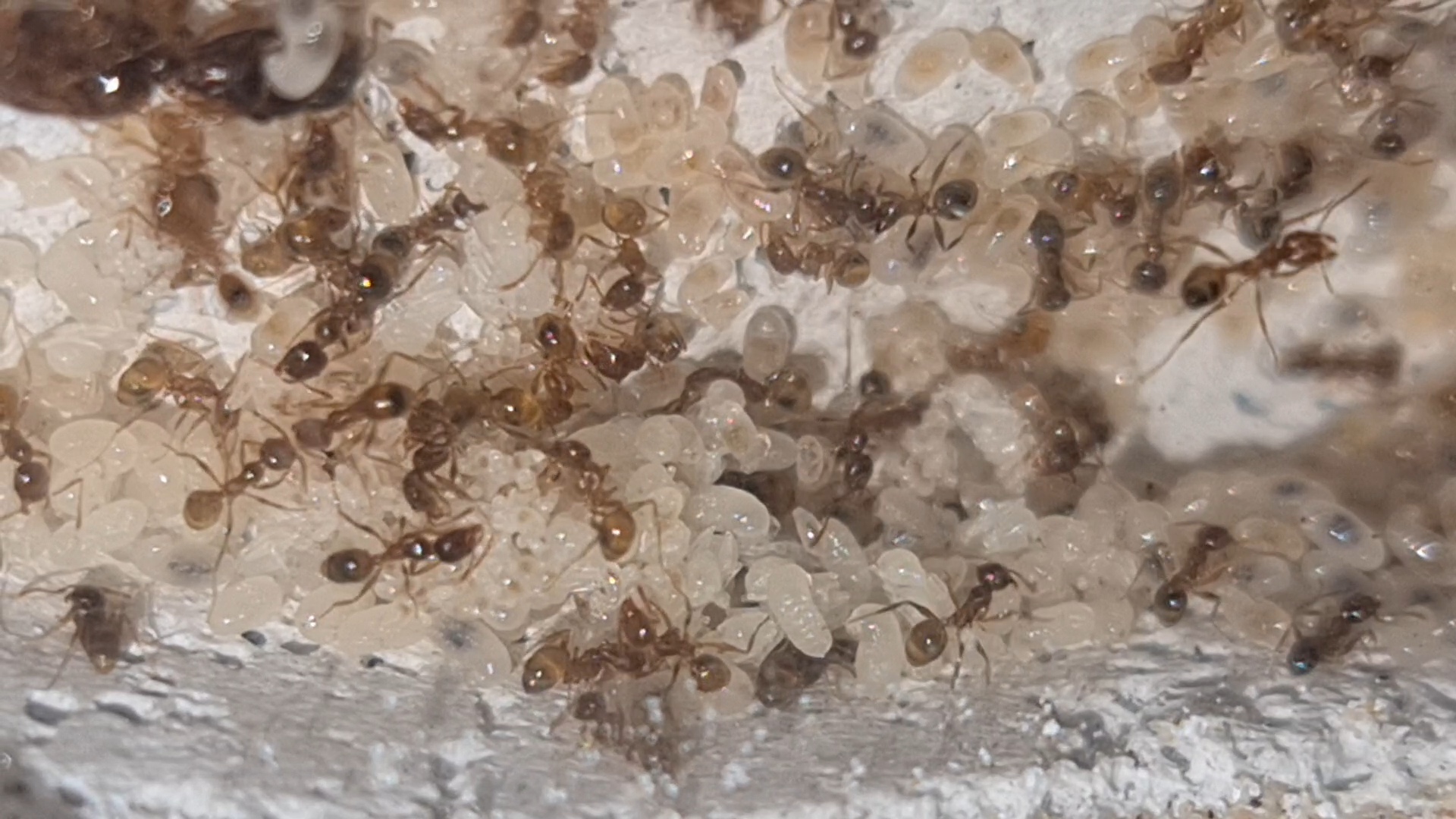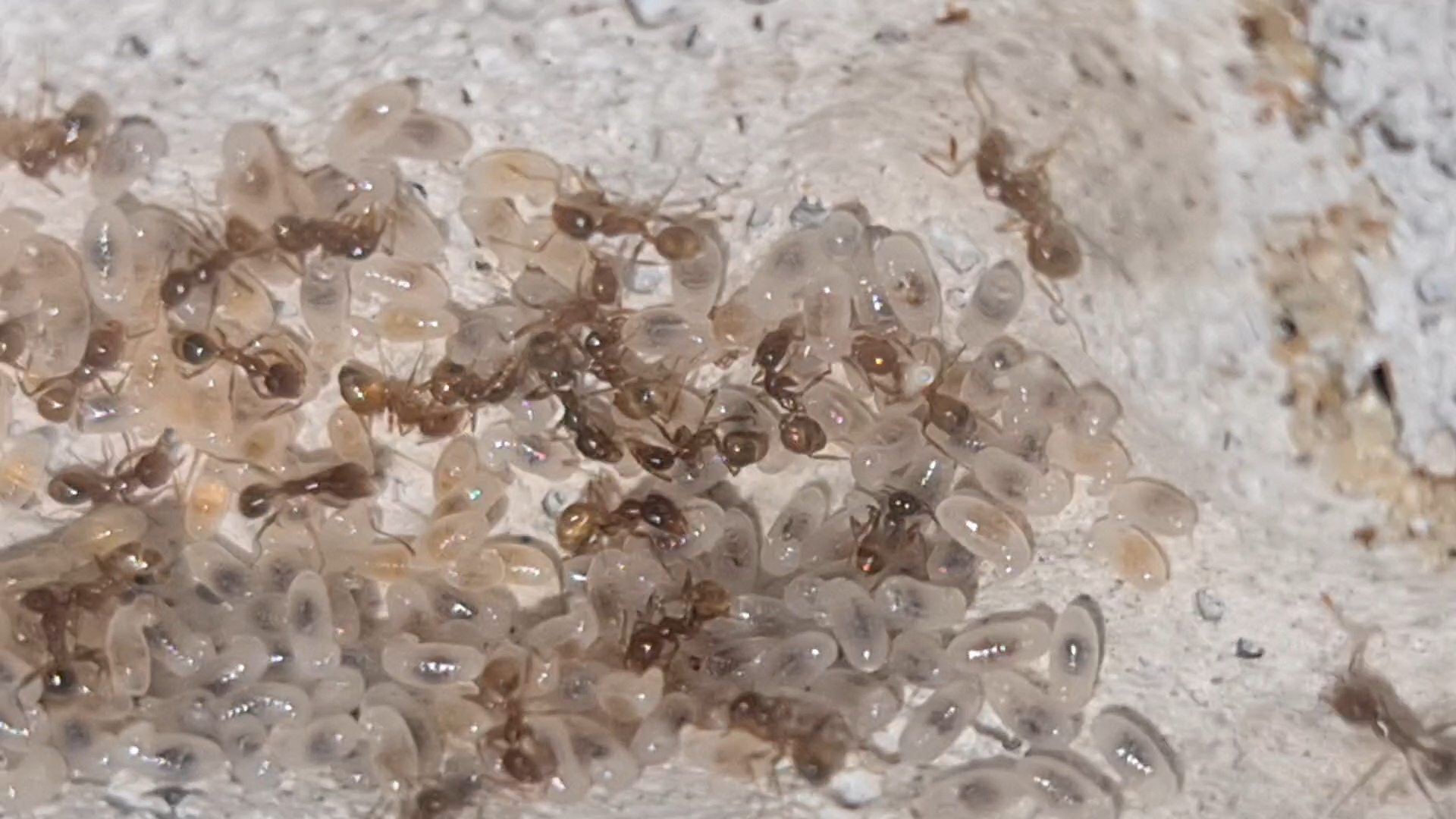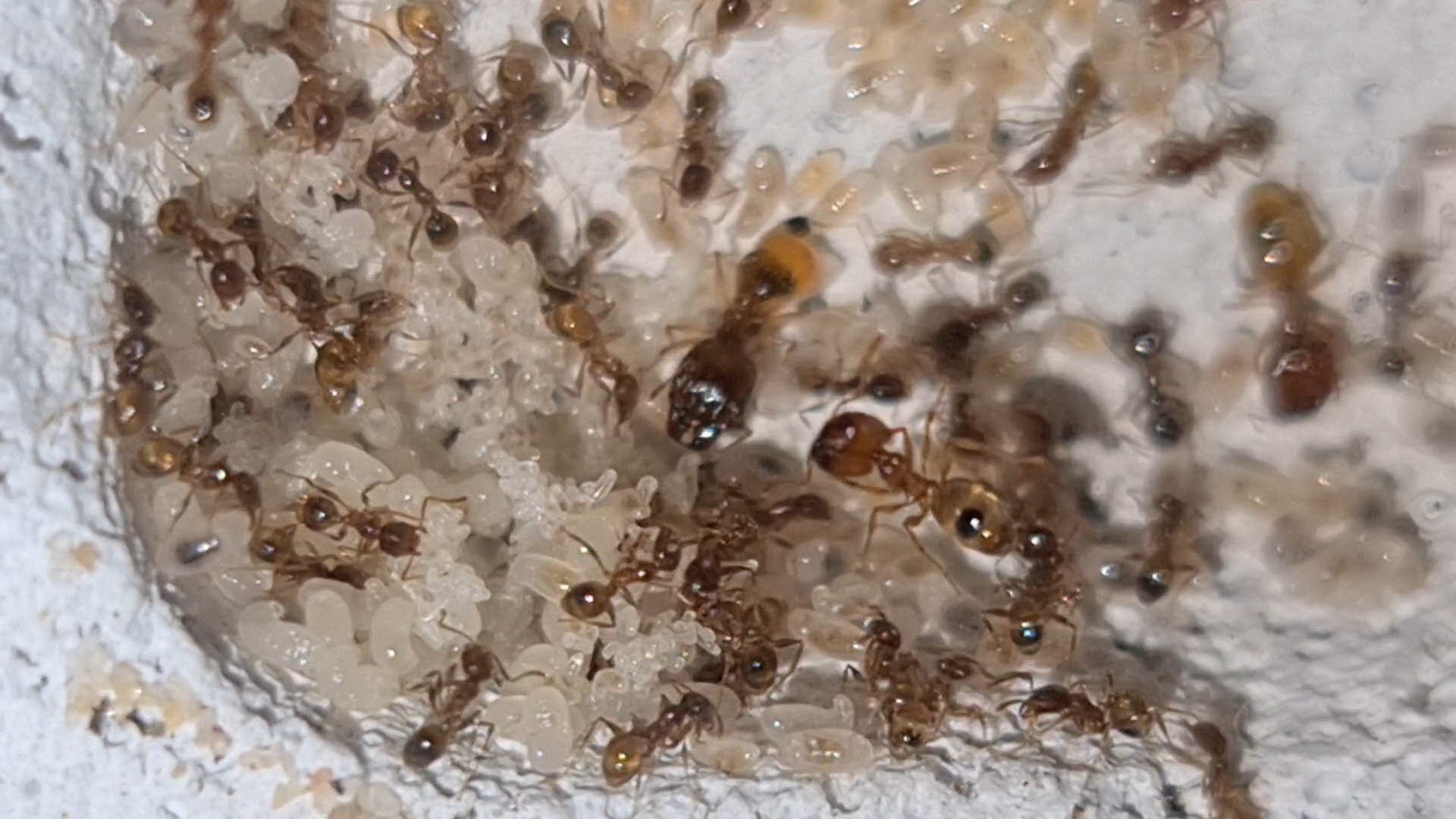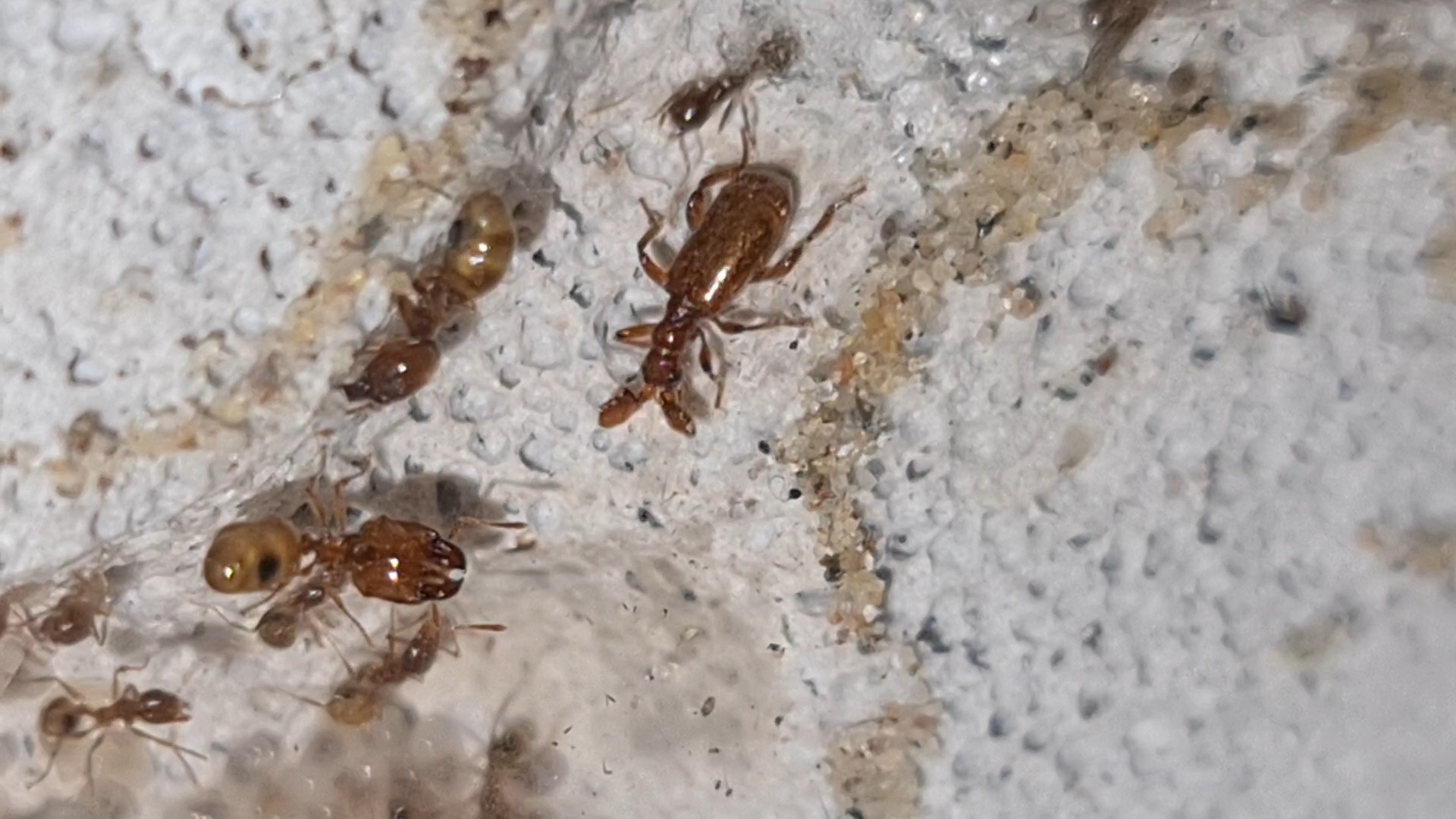You may or may not have seen my original thread in the General Antkeeping Discussion:
https://www.formicul...-my-ant-colony/
I purchased a Pheidole Pallidula colony, and after a few days, I realized...there were two beetles in the colony. And the ants weren't attacking them. In fact, they seemed totally chill with the beetles. I was dumbfounded to the say the least, since we all know much ants love to ruthlessly attack and kill anything that comes near their nests.
When I first discovered them:
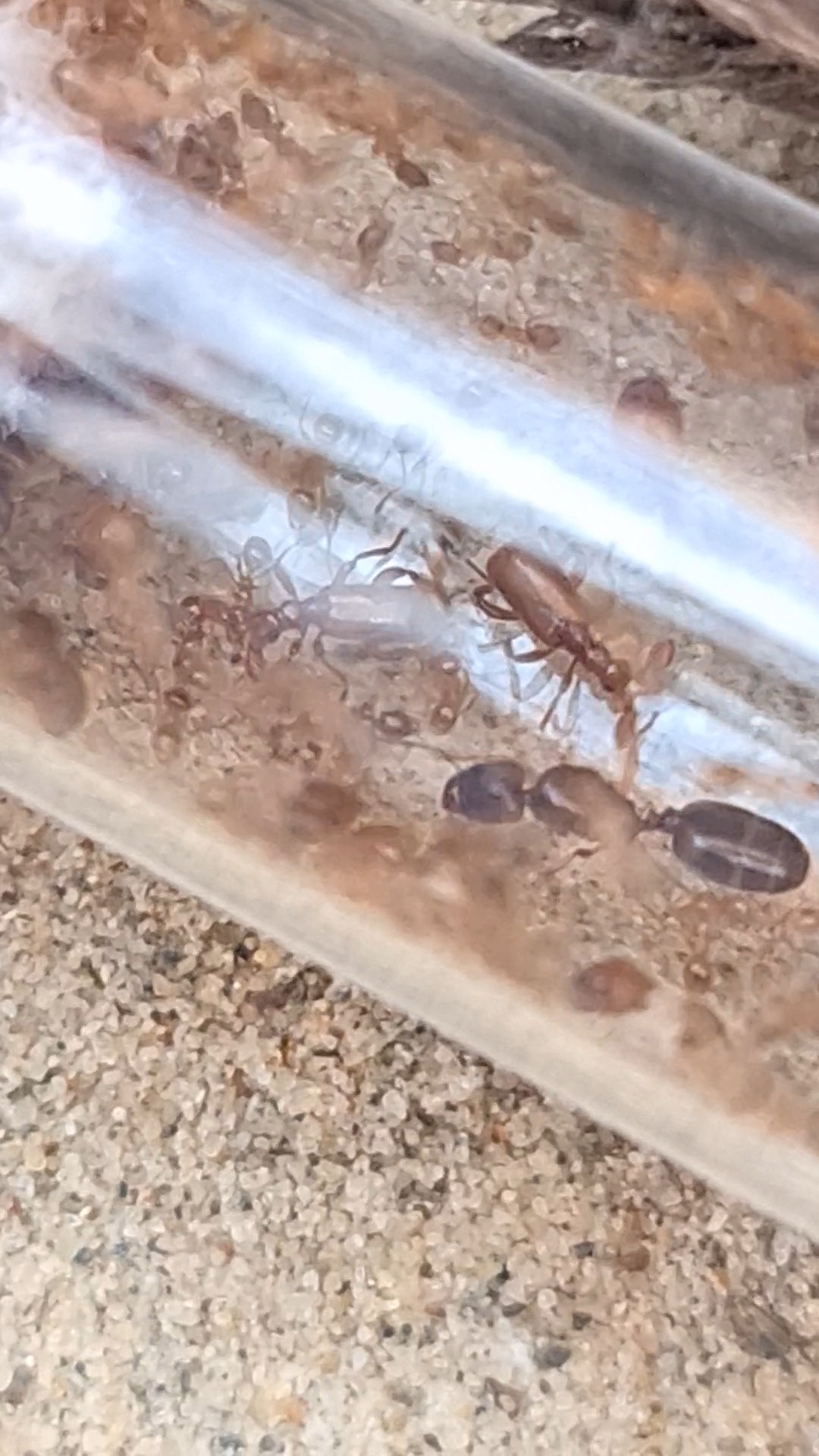
Around the same time that I posted that thread, I also posted in an insect ID group asking for an ID on these two strange beetles. At this point I was thinking I'd probably remove the beetles so the colony wouldn't be harmed by them.
An entomologist saw the post, and sent me a message with the name and contact info of another entomologist employed by a well known university. He said I should get in contact with her and tell her what I have.
I did, and she responded right away saying that she was SUPER excited. She was hoping I could send her the colony, but since I live on the other side of the globe, it was too big of a risk. She asked if we could set up a zoom call, and I gladly obliged.
As it turns out, this woman has written literal peer-reviewed papers on these types of beetles. Apparently they are incredibly difficult to obtain, let alone have living in an established colony.
By this point I've long dropped the idea of getting rid of the beetles, since they are clearly something very special. She wanted to know if I'd be interested in collaborating, and sending her any footage/observations I can take of the beetles. The wanna-be biologist in me is absolutely giddy over the idea...so, here we go!
Colony purchased with 2 queens and "100-250 workers"
Second from the bottom in first image
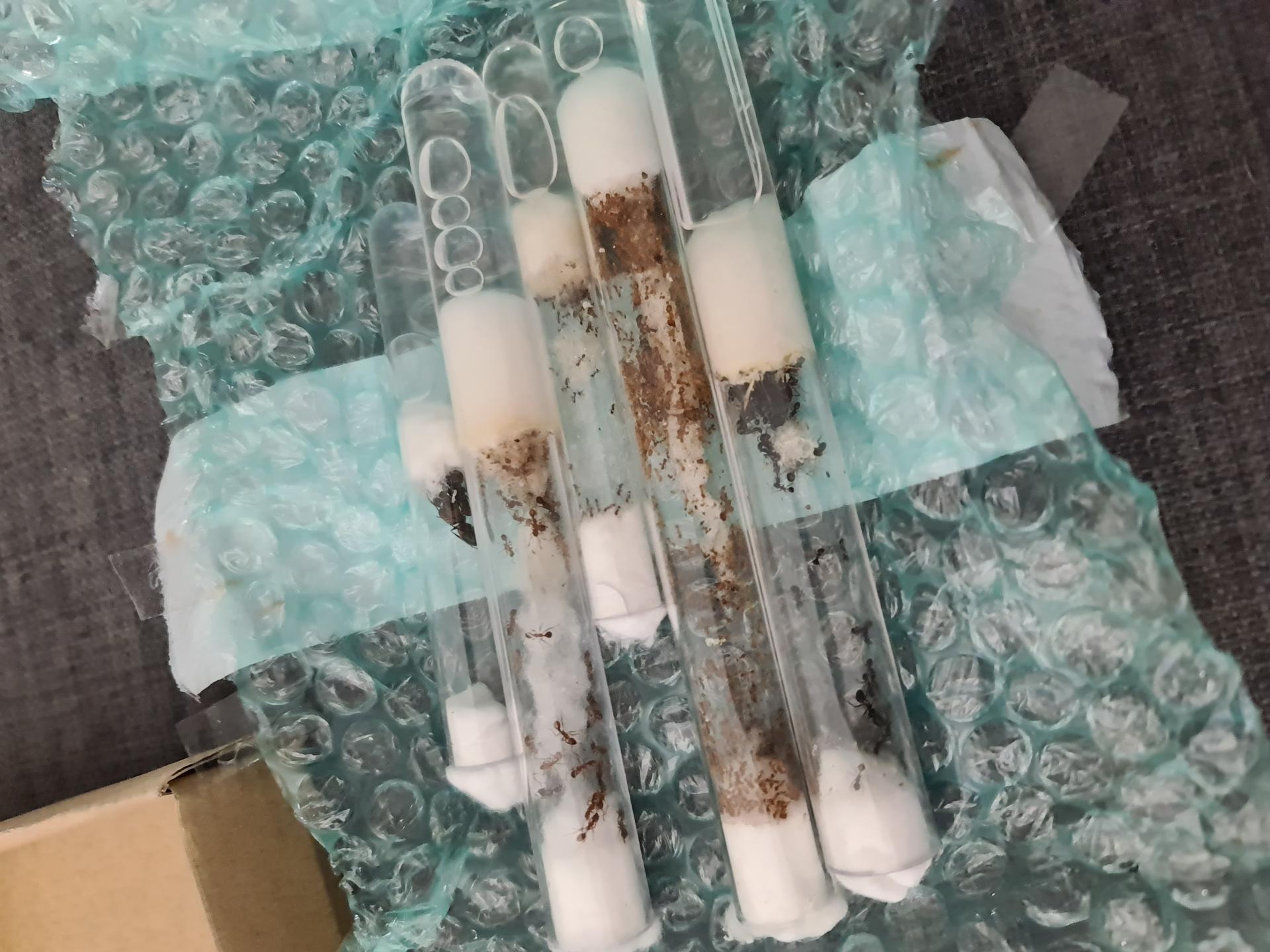
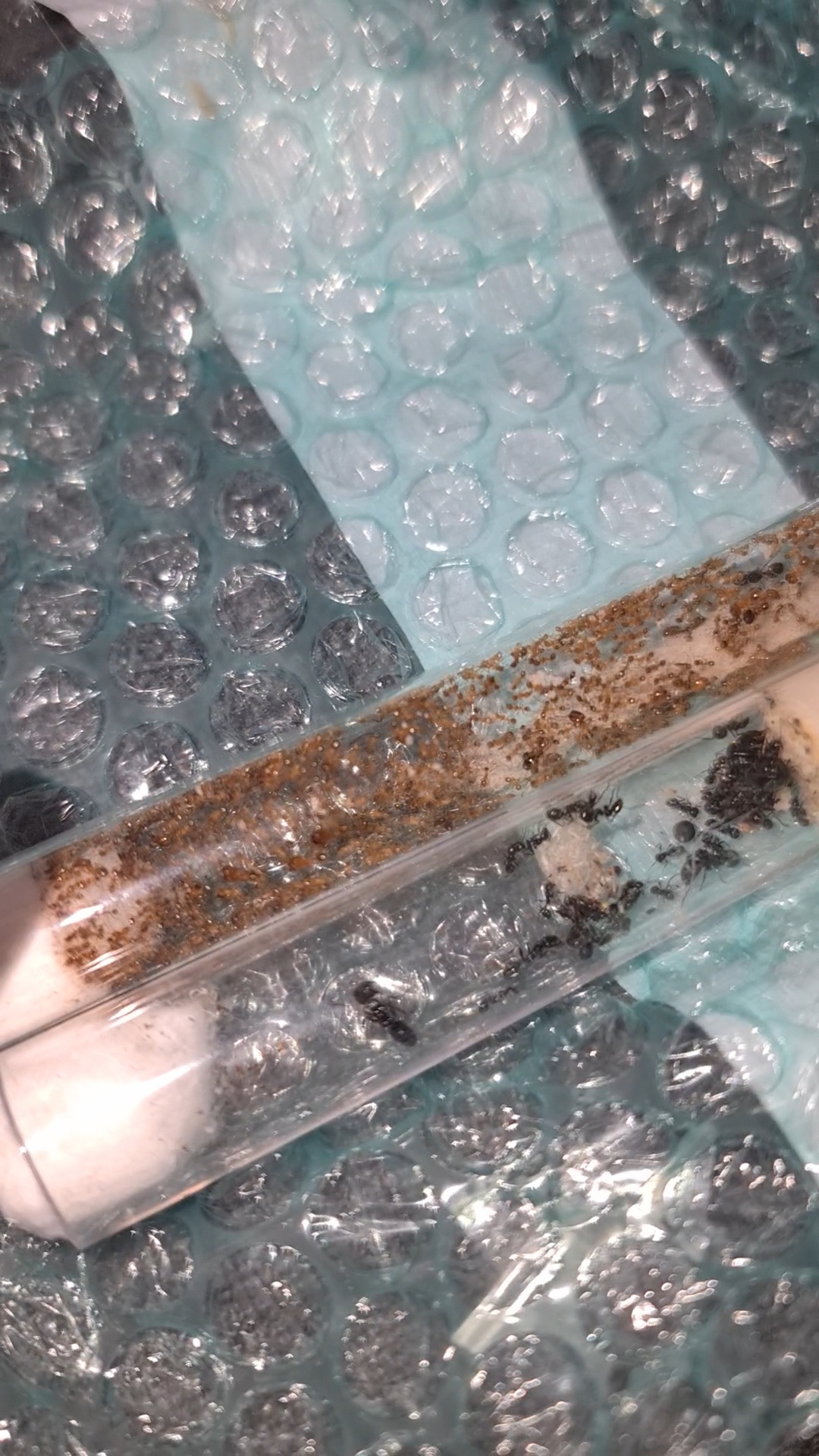
Some decent-ish photos of the beetles:
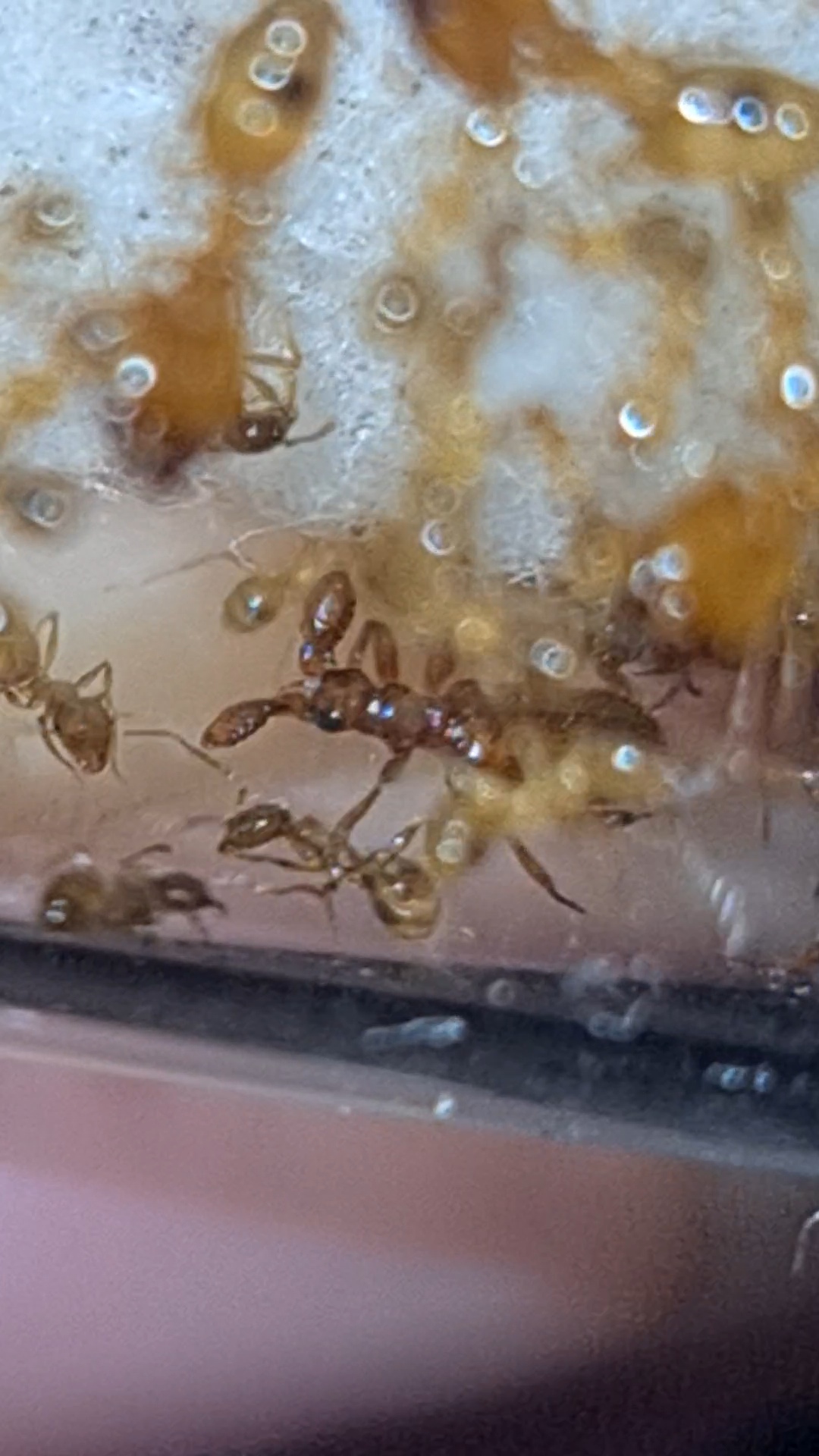
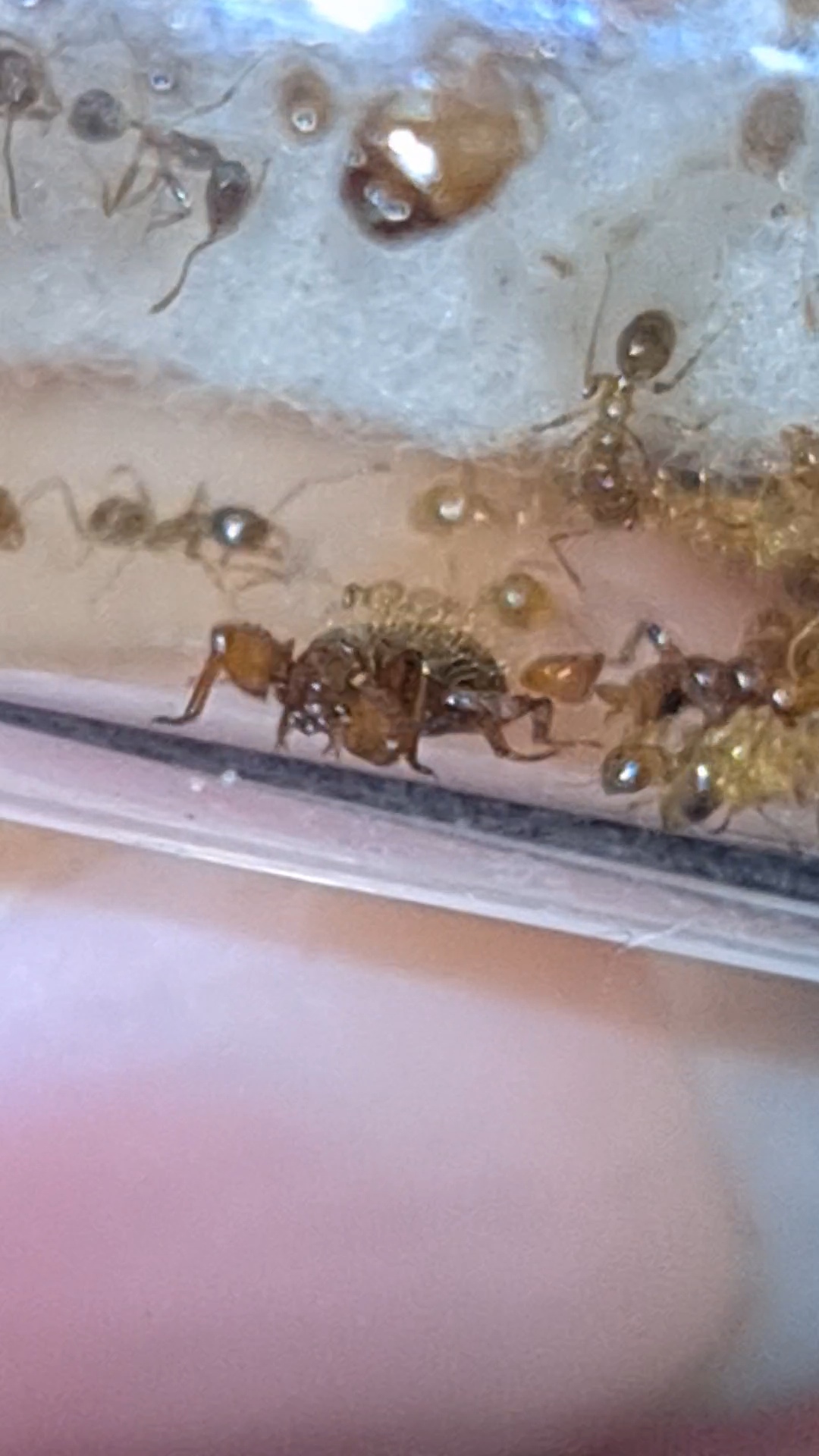
Here is one moving between the two test tubes that the ants have in their outworld:
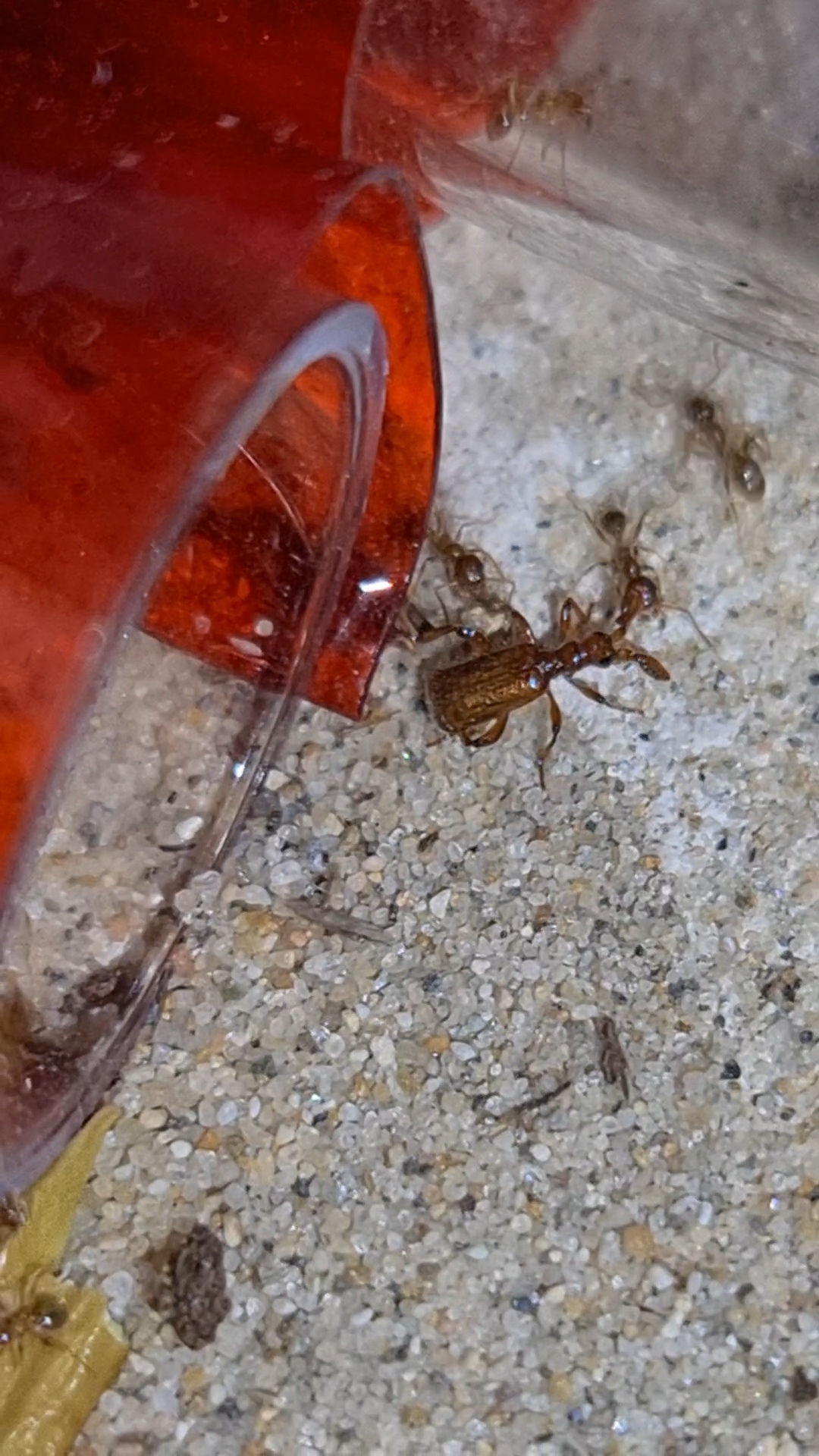
So far we know that the beetles are Paussus favieri, and that they generally feed on the brood and workers of the Pheidole Pallidula colony they live in. They can produce vibrations that mimic vibrations made by workers, majors, or the queen. Ants who are being actively fed on by the beetles do not resist in any way, nor do other ants seem bothered by it.
The person who sold me this colony was removing the beetles before selling colonies, thinking they were just pests. The scientists face when I told her this was...filled with horror. lol
The seller will be getting more colonies next week, and we are hoping that it will include some that have beetles. If so, I have a bit of leftover birthday money that I'll use to buy as many of them as I can afford! He may also be able to ship a colony to the scientist herself (still need to look into import laws to the US)...but this is all assuming he gets more colonies that have beetles. Fingers crossed!
Edited by FelixTheAnter, May 28 2023 - 9:05 AM.


